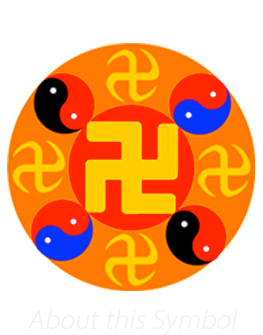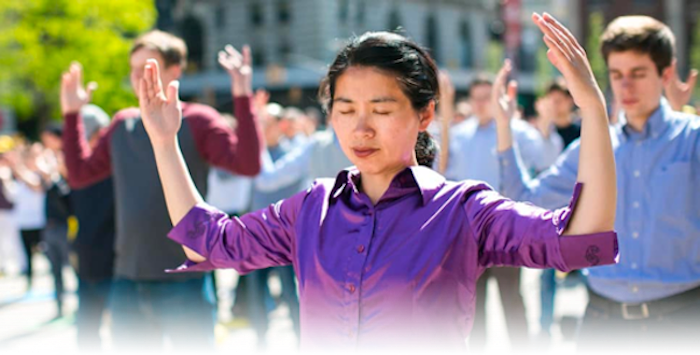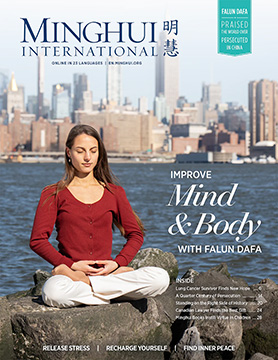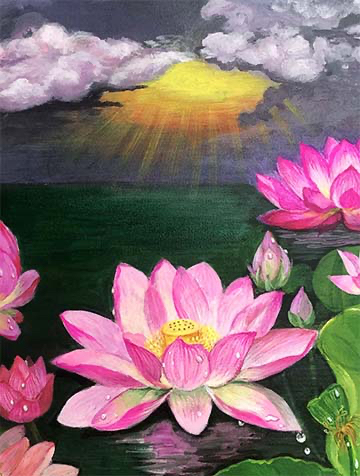(Minghui.org) Traditional Chinese culture is vast and profound. But some people think these values are outdated. Someone once asked me, “How do these ancient values help us in the age of modern science and AI?” .
This is an important question because it invites us to explore the connection between ancient wisdom and modern society.
Ancient Wisdom Vs. Modern Science
One notable example is the binary system, where numbers, letters, and other information are represented as sequences of 0s and 1s. In fact, all modern computer data relies on binary encoding. When developing the binary system in 17th century, German mathematician and philosopher Gottfried Leibniz emphasized its reflection of simplicity and the unity of the divine.
In his published works, Leibniz acknowledged the significance of the I Ching, an ancient Chinese text attributed to the sage Fu Xi. He wrote, “Explanation of the binary arithmetic, which uses only the characters 1 and 0, with some remarks on its usefulness, and on the light it throws on the ancient Chinese figure of Fu Xi.”
Leibniz was particularly intrigued by the hexagrams in the I Ching. Each hexagram consists of six stacked horizontal lines—either solid (yang) or broken (yin). These patterns symbolize the qualities of yin and yang, offering insight into human nature and the world.
In fact, traditional Chinese culture also holds that the human body, society, and the cosmic body are closely interconnected. While this may seem inconceivable because of the vast distances involved, a similar sense of mystery arises in modern science, particularly in the phenomenon of quantum entanglement.
In classical mechanics, objects are influenced solely by their immediate surroundings, a concept known as the principle of locality. However, in quantum mechanics, a pair of entangled particles (that is, one with clockwise spin and the other with counterclockwise spin) seem to be able to communicate with each other with faster-than-light signals. Albert Einstein famously referred to this phenomenon as a “spooky action at a distance.”
Furthermore, scientists have visualized the wave function of two entangled photons using digital holography. In a 2023 paper from Nature Photonics titled “Interferometric imaging of amplitude and phase of spatial biphoton states,” researchers from the University of Ottawa and the Sapienza University of Rome successfully reconstructed the yin and yang symbol in the Tai Chi diagram.
The harmony between human beings and our surroundings is manifested in many ways. The traditional Chinese characters of music and medicine not only share the same pronunciation (yue), but also closely resemble each other in their writing strokes. This is consistent with the description in the Yellow Emperor’s Inner Classic, a well-known ancient book on Chinese medicine, “music cures the heart and medicine cures the body.”
Furthermore, the five principal notes (gong, shang, jue, zhi, yu) of the traditional Chinese pentatonic scale correspond to the five elements of earth, metal, wood, fire, and water, respectively. Both of them also relate to the five major internal organs (spleen, lung, liver, heart, and kidney). “The Pure Heart and Universal Benevolence Mantra”, a melody from ancient China, was able to regulate breathing, balance the mind, and enhance overall health.
Such ancient wisdom is also seen in modern society. The renowned Berklee College of Music, for example, has a Music and Health Institute which aims to improve health and well-being through music.
Difference Between Modern Ideology and Traditional Values
Influenced by modern technology, many people tend to trust only the science they are familiar with and dismiss differing viewpoints. Consequently, they may become more focused on material life, neglecting traditional values in the process.
One example is anxiety, which has become a norm in modern society. People often want more, regardless of their capabilities, and complain when their expectations are not met. But according to traditional Chinese culture, one’s fortune comes from virtue, and one’s position (such as official rank) is consistent with his or her virtue. Therefore, one should approach tasks diligently with a calm mind, rather than pursuing impractical wishful thinking.
The I Ching, one of the old Chinese classics mentioned above, states, “Big responsibilities are based on great virtue.” That means virtue carries blessings and fortune the same way as water carries a boat. When water is shallow, it could hardly carry anything.
Zeng Guofan, a prominent official during the Qing Dynasty, exemplified the integration of traditional values and personal growth. He deeply respected classical teachings and consistently worked to refine his character. Drawing from the I Ching, he understood the importance of balancing yin and yang—recognizing that one must strive not only for achievement (yang), but also for humility and self-restraint (yin). After major victories, he credited others for success and sometimes reduced troop numbers to ease the emperor’s concerns.
In his personal life, Zeng emphasized “honesty, respect, tranquility, caution, and perseverance.” He wrote in a diary every day and reflected on his behavior. In particular, he paid attention to “discipline when alone”—even when staying by himself, he always maintained dignity instead of indulging himself. These qualities not only earned him respect from others but also attracted many talented individuals around him. Zeng’s story teaches us that when one cherishes virtue and personal growth, success will naturally follow.
However, few people in modern society follow that. Especially in mainland China, many people aspire to achieving wealth and fame overnight, even if it means hurting others. To make things worse, the art and entertainment industry often focuses on sensory pleasure and lust accompanied by moral degeneration.
In ancient times, things were different. Legend has it that Fu Xi created the se, a plucked zither, to "calm the heart and nourish the soul." This purity and the harmony of yin and yang were believed to elevate a person, drawing them closer to the divine.
(To be continued)
Views expressed in this article represent the author's own opinions or understandings. All content published on this website are copyrighted by Minghui.org. Minghui will produce compilations of its online content regularly and on special occasions.
Category: Traditional Culture








